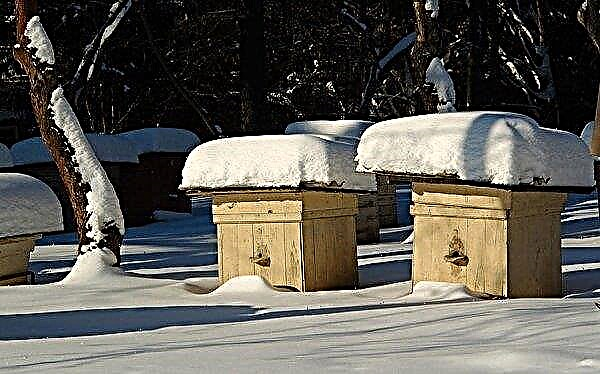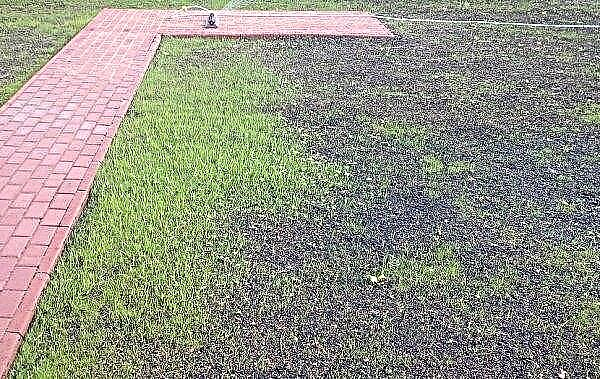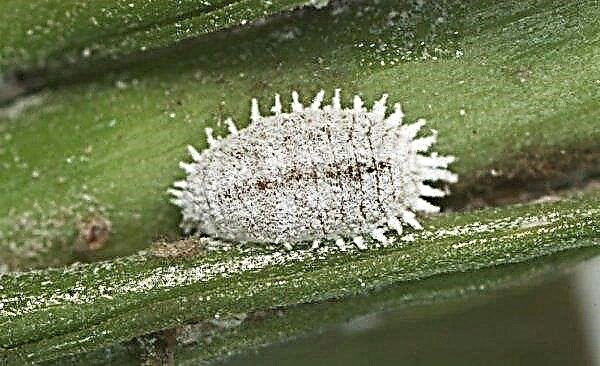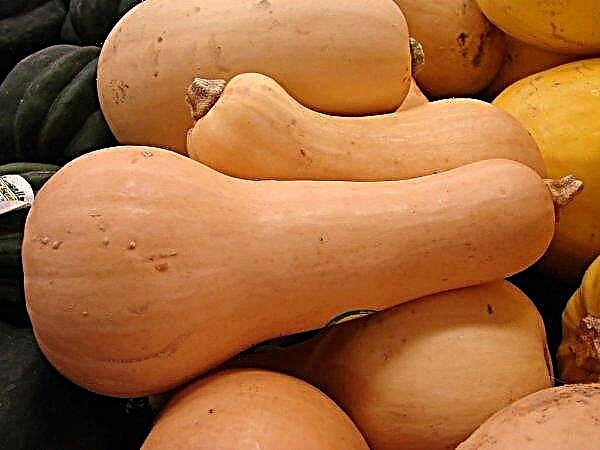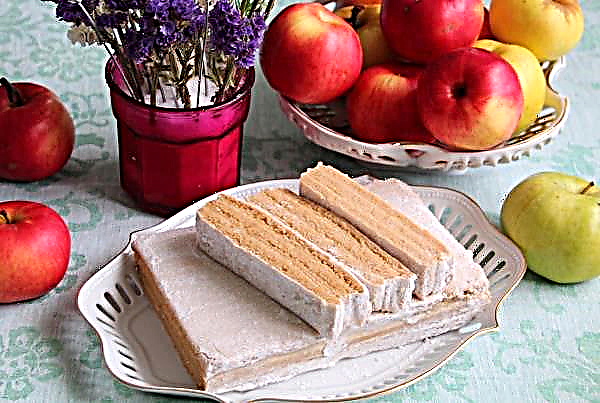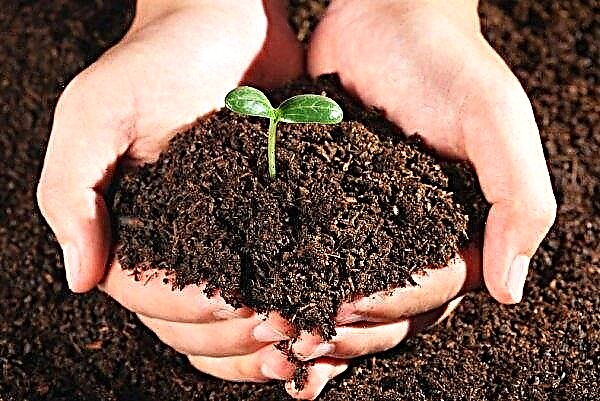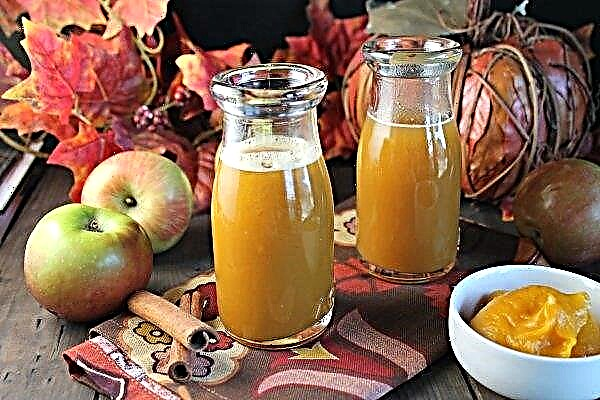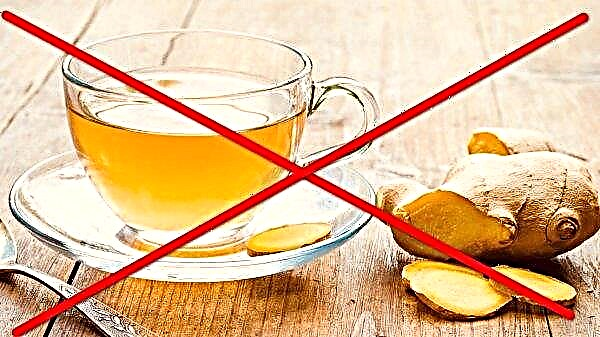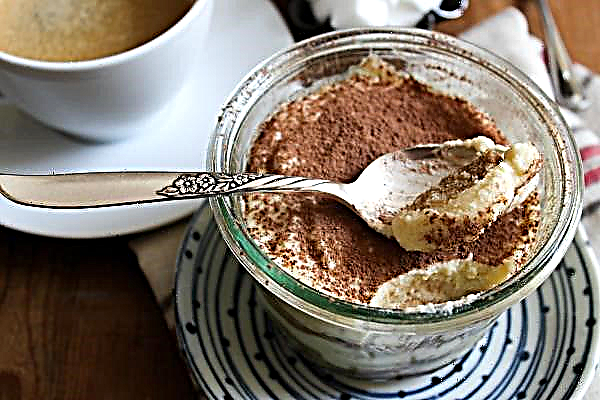One of the most important aspects of the maintenance of thuja is competent feeding. Oversights when feeding her are fraught with the death of a coniferous representative. In this article, the most effective nutritional compositions for this evergreen tree, as well as the techniques for their application, will be presented to your attention. You will learn about ways to determine which nutrients are lacking in needles, and what measures need to be taken to improve this plant.
Why is feeding for thuja necessary?
For harmonious development, your evergreen representative, in addition to other care procedures, requires complex nutrition. With each season, the concentration of useful elements in the soil layer under the tree is reduced - some absorb the rhizome, and the other is washed off by surface waters. As a result, thuja suffers from a nutrient deficiency and begins to become exhausted. This situation can lead to the death of a long-term culture.

Identify the lack of certain chemical elements is easy. Upon receipt of an insufficient amount of magnesium or potassium, the top of the tree may turn yellow. White coating on any part of the plant is formed with a small amount of iron in the soil. Nitrogen deficiency is manifested by symptoms of chlorosis - the growth of new shoots during the vegetation phase is suddenly inhibited, the coniferous plant is discolored. And in such a bad situation, when the ends of the branches of a young tree are painted in a brown-purple hue, phosphorus is required.
The timely feeding helps the coniferous plant to grow quickly, maintain a dense crown of intense color and delight the owner with a worthy gain.
Gardeners resort to the introduction of nutrients in the following cases:
- to increase the overall level of agricultural background;
- when landing thuja in poor land in order to increase its fertility;
- after planting a young tree in spring;
- in the process of transplanting in the fall season.
Video: How to fertilize thuja
Types of fertilizers
The modern market offers many organic and mineral mixtures, as well as complex preparations suitable for the presented culture. Under the influence of mineral-based products, the needles acquire a very attractive appearance and are pleased with their excellent growth.. Organic matter is absolutely environmentally friendly. They quickly saturate the soil with nutrients and make it breathable.
Organics
Organic substances (humus, peat, mature manure, bone powder, vegetable ash) improve the structure of the soil and stimulate the processes occurring in it.
This group of top dressings is preferably applied in a dry form. Natural fertilizers interfere exclusively in the surface layer of the soil.

Farms produce finished products in which the main ingredients are organic substances:
- Bioud (made from livestock products and easily digestible minerals);
- Humvit Eco (contains biohumus, activating vegetation).
Important! As with the landing of thuja, and in the process of further care, it is forbidden to use unripe manure or chicken droppings. These pet products are highly concentrated and can burn the rhizome of conifers.
Minerals
When choosing mineral preparations for your evergreen representative, pay attention to the presence of potassium, magnesium and phosphorus in the composition. Ready mixes effectively and almost immediately solve the problem of malnutrition. However, it is permissible to introduce them exclusively according to the doses indicated on the package.
The lack of nitrogen immediately after upsetting is easily compensated by the introduction of urea, ammonium nitrate and azofoski. Use the listed funds in the form of granules or dissolved.

Dry preparations are useful in that when they are added, not only is the replenishment of the missing substances, but also the plowing of the earth is carried out.
With the advent of summer, you should stop making nitrogen. This should be done in order to prevent new shoots that weaken the plant from actively growing.
Complex fertilizers
In order to feed thuja you can use complex mixtures. They contain the entire set of valuable substances that your evergreen representative needs. The most popular among gardeners are such funds as “Aquarin”, “Zdraven”, “Green Needle”, “Fertika” and “Hvinka”. Given the cumulative effect of such drugs, they can be used every 3-5 years.

Folk fertilizers
In the matter of fertilizing thuja, you can resort to folk remedies:
- Yeast top dressing. For its preparation, 35 g of diluted dry yeast and 2 tbsp. l dissolve sugar in 0.7 l of water and keep in a warm room. The concentrate will be ready for use after completion of the fermentation process. For irrigation, dilute the liquid in water at the rate of 1 tbsp. for 10 liters
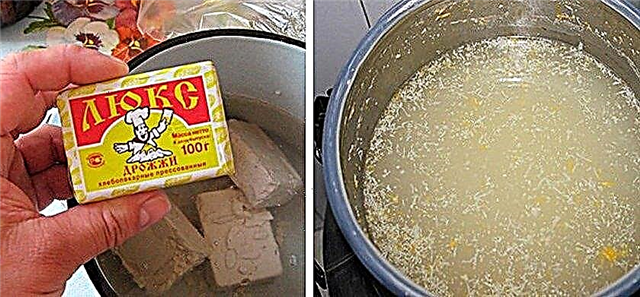
- Solutions based on vegetation with a high concentration of nitrogen (nettle, wheatgrass, clover, asterisk medium, spurge, dandelion). Grasses must be harvested before the seeds appear. The raw materials must be crushed, then folded into a plastic barrel, filling it in 2/3 and adding water. Add ammonium nitrate or urea to the liquid (5 tbsp. For every 50 l). Cover the container with the mixture with a lid or plastic bag, making a small hole in it. Next, the capacity needs to be transferred to the sun, where it should stand for 7-10 days. During infusion, try to mix the working fluid from time to time. Dark brown herbal solution should be diluted with water at the rate of 1:10.

Experienced gardeners often practice introducing ammonia diluted with water, as well as irrigating a coniferous plant with a weak iodine solution.
What top dressing is better to choose
Fertilizers for the crop in question must be selected taking into account the general age and condition of the tree, as well as soil characteristics. Shortcomings in the process of introducing nutrients lead to yellowing of the tree and many other troubles. Various nutritional compositions allow the plants to maintain decorativeness throughout their life. Later in the article, you will learn how to enrich the soil under the thuja during planting, during growth, as well as in adulthood.
Did you know? Tuja is also called the "tree of life" or the tree of life ", because it brings great benefits to people, releasing volatile substances into the air - biologically active substances that inhibit the growth of pathogens.
When landing
Planting a "vital tree" in enriched soil helps to ensure that it exhibits rapid survival. It is recommended to make humus, compost or vegetable ash. And their complex application will become a guarantee for proper development for a young conifer.
Add the listed substances to the ground that you will use for planting. Thoroughly mix the soil so that the rhizome of the seedling does not suffer from direct contact with organic matter. Take about 10 l of compost for one recess measuring 50 × 70 × 70 cm, the same amount of humus and 3 kg of ash.

During growth
In the spring, it is recommended to use phosphorus-containing mixtures, ammonia-nitrate fertilizer, potassium and magnesium-based preparations, as well as long-acting complex preparations for feeding.. An excellent harmless storehouse of calcium can be bone meal.
Feeding the soil under the coniferous representative in the spring should become a regular component of care, regardless of the age of the plant. You should start activities at the moment when the soil is melting (from the beginning to the end of March).
 If, after wintering, a young coniferous plant has suffered from cold winds, sunburn, or frostbite, it is necessary to additionally use means that activate root growth (for example, "Agricole" or "Kornevin")
If, after wintering, a young coniferous plant has suffered from cold winds, sunburn, or frostbite, it is necessary to additionally use means that activate root growth (for example, "Agricole" or "Kornevin")
Yellowing tree
It often happens that the thuja turns yellow, thereby losing its decorative effect. An illiterate plan for the introduction of fertilizer substances can lead to yellowing or yellow spots - an erroneously selected remedy or an incorrect calculation of its dose.
The solution to the problem of yellowing needles is to introduce fertilizer into the soil, in which iron predominates. And spots of a yellow or brown hue are eliminated by enriching the soil with phosphorus top dressing.
Did you know? The Latin name of the thuja “Thuja” has an ancient Greek root meaning “sacrifice”, “incense”. This is due to the fact that tree branches were often used for sacrificial burns.
Lack of batteries often results in yellowing. The disadvantage is possible in a situation where the plants are too close planted to each other. The powerful rhizome of each tree will try to “pull on” as many useful substances from the earth as possible. To prevent this situation, when planting, observe a distance between seedlings of at least 2.5–3 m.

Adult thuja
After completion of the rhizome formation process, a mature coniferous tree is able to independently extract all the necessary elements. But even then the tree needs regular top dressing, the purpose of which is to prevent natural soil depletion. The procedure should be carried out throughout the life of the thuja, but during the period of active growth, their volume should be greater.
And if an adult tree is cultivated in a container, it should be fed once every 2 weeks (regardless of the season). In this case, the batteries will not prevent the thuja from moving the winter safely.
To increase the fertility of the earth under a mature perennial, peat, compost, wood ash and bone powder are used. The advantage of these substances is the lack of stimulation of the active development of young branches after the end of the vegetation phase.
Feeding time and frequency
Nutrients for coniferous crops are also selected depending on the season. The tree grows well under the condition of three times feeding - in spring, summer and autumn. This measure will also prepare the coniferous plant for the upcoming winter. An incorrectly conducted preparatory stage is fraught with freezing and deterioration of the general condition of the tree.
In summer
In the warm season, the green beauty should be fed exclusively with nitrogen. It is recommended that all work be completed before mid-summer so as not to accelerate shoot growth. The latter situation will lead to the fact that the process of wooding of the stems will be quite slow.
In order not to harm the coniferous plant, resort to summer dressing only if they were not carried out in the spring. It is advisable to apply them by spraying. In addition to nitrogen-containing products, superphosphate, potassium sulfate, biohumus-based fertilizers and mineral mixtures can be used.

Fall
Phosphorus and Potassium Based Mixtures Required This Thuja Season. Enriching the garden with these elements helps conifers to prepare in advance for wintering. The process of making fertilizers for autumn feeding should be started in the summer (from July or August). Take for this purpose special products marked "for conifers" (for example, “Green Guy”, “Embiko”, “Novofert”, “Green Nutrition”, “Stimovit”).
Important! When purchasing preparations for autumn top dressing, pay attention to the amount of magnesium contained in them. From the lack of this element the needles of the tree turn yellow and fall.
Directly in the autumn, it is forbidden to use any minerals or organic matter, since the late stimulation of vegetative processes negatively affects the upcoming wintering. Only thuja cultivated in the southern regions are not exposed to such a threat.
Video: How and when to fertilize conifers
In the spring
Use nitrogen-based mixes in the spring season. A large selection of such fertilizers is offered on the modern market, among them are Agrecol, DureTec, Solufeed. Preparations are available in the form of granules, powder and liquid solution. Feeding with the listed means is done once. The reason is that nitrogen fertilizers have a long duration - they are able to enrich the upper layer of the earth's crust for three months.
You can opt for multi-purpose products (Planton, azofoska, Multivit). Narrow-profile preparations (Compo, Biopon, Florovit, etc.) are also suitable for spring feeding thuja.
How to feed
In order to get the most benefit from any fertilizer, follow these simple guidelines:
- Between feeding with drugs with various components, take a break (from 15 or more days).
- Try alternating batteries of chemical origin. In addition, it is highly undesirable to use together complexes containing the same components.
- A day before the planned dressing, thoroughly moisten the trunk area.
- Thuja can be fertilized by two methods - under the rhizome or by foliar technique (spraying on the crown).
- It is permissible to simply distribute the mineral product in the form of granules on the surface of the earth under a tree.
- Dilute liquid mixtures (organic or minerals) following the attached instructions. So you prevent horse burns and damage to branches with a highly concentrated liquid.

Thuja's health and its growth largely depend on the efforts made by the gardener in such an important agricultural technique as top dressing. Timely fertilizer applied, a competent combination of elements and calculation of their volume will allow you to admire the luxurious green needles on your site for a long time.



